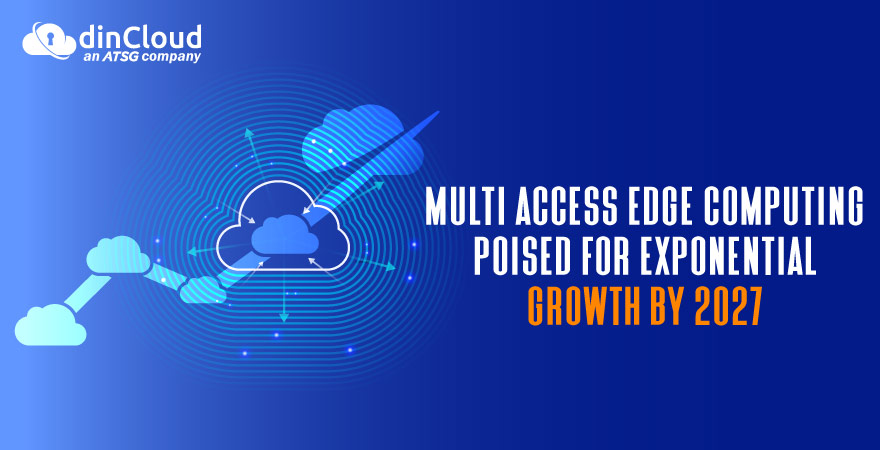These days, an increasing number of processes are now powered by Cloud Computing infrastructures. However, we are witnessing a whole new era of ultra fast processing, whereby the apparently negligible latency of the Public Cloud sounds a lot.
While Cloud Computing infrastructures are more than up to the task when it comes to handling processing intensive workloads, some degree of latency is inevitable. In most of the cases, it is attributable to the physical distance and the quality of the internet.
Both these contributing factors are well beyond the control of even leading Cloud Service Providers (CSP). The element of physical distance is still somewhat manageable, though at an astronomically high cost, by setting up more localized data centers.

Still, we have started to encounter certain time sensitive workloads where even the slightest degree of latency is just not tolerable. This is where the role of Multi Access Edge Computing, or MEC comes into play.
In this post, we will be covering some Multi Access Edge Computing (MEC) trends and forecasts for the upcoming years, and the role which such architectures will be playing in handling highly time sensitive workloads.
Key MEC takeaways from Juniper Research Report
Recently, a research titled, “Edge Computing: Vertical Analysis, Competitor Leaderboard, and Market Forecasts 2022-2027”, was released by Juniper Research. The study takes into account the existing and future outlook of MEC, between the years 2022 and 2027.
Before we dive into the contents of the research report itself, let us briefly discuss what Multi Access Edge Computing (MEC) is, and what will be its impact on our lives.
What is Multi Access Edge Computing (MEC)?
MEC is a network architecture that eliminates, or drastically reduces latency by bringing both processing capabilities and digital content dissemination to mobile network edges. By doing so, MEC aims to eliminate latency from a wide range of workloads and processes.
As discussed above, latency is not something that bothers every process or end user. However, in certain time sensitive use cases, say self driving autonomous vehicles, latency can become a cause for endangering human lives and imminent loss to property.
Growth Projection for MEC by Year 2027
According to Juniper Research, the existing size of the global MEC market during the year 2022 is expected to be just shy of the US $9 Billion mark. It is estimated that by the year 2027, the total size of the global MEC market could reach the US $22.7 Billion mark.
This translates into a Year on Year (YoY) growth rate of a whopping 260%, underscoring this technology’s potential for exponential growth in the upcoming few years. This growth will partly be fuelled by the need for on-premise Machine Learning (ML) capabilities.
Up until now, most of the Machine Learning (ML) phases were being handled by the immense processing muscle of the public cloud. However, Multi Access Edge Computing (MEC) aims to change this trend in a big way.
The Existence of MEC Nodes
According to the research report, the deployment of powerful MEC nodes will play an instrumental role in making this technology a commercial as well as operational success. Each of these nodes will be able to function independently, and as part of a network.
It is estimated that by the end of the year 2022, less than a million MEC nodes will have been successfully deployed across major metropolitan locations. However, it is estimated that the number of deployed MEC nodes by 2027 will be almost 3.4 million.
The Role of 5G as a Key MEC Enabler
When we talk of moving resource intensive processing close to Edge Networks, the only feasible way of achieving this is a super fast data and communications medium, which comes to light in the form of 5G technology.
As the commercial feasibility of 5G technology takes shape, we will see even more aggressive investments in developing the 5G infrastructure by global leaders in the Information and Communication technology sectors.
The Major Beneficiaries of MEC
As per the research report, two of the main beneficiaries of this MEC revolution initially will be autonomous vehicles and smart cities. Rather, MEC will becomes a key enabler for these two technologies that are at the verge of explosive growth.
Self driving vehicles, as the technology matures, will be creating a huge impact on our day to day lives. The scope of this technology will not be limited to just small sized passenger vehicles, rather it will extend to large sized commercial vehicles as well.
MEC Induced Mobile Revolution
It is expected that by the end of year 2022, almost 390 Million mobile users will be connected or integrated with the MEC nodes we have discussed above. By the year 2027, it is estimated that this figure will exceed 1.6 Billion users.
This means there will be also be an MEC driven revolution within the smartphone user’s community. Smartphones are growing more powerful with every passing day, and technologies like MEC will open new frontiers for what our smartphones can accomplish.
Conclusion
Multi Access Edge Computing (MEC) stands to usher in a lot of fundamental changes in how we handle data, workloads and processes, especially the time sensitive ones. MEC will bring us one step closer to the elusive goal of eliminating latency from some workloads.
Contact dinCloud, an ATSG company, for its state of the art Cloud Computing infrastructure that is scalable, reliable, secure and affordable.


